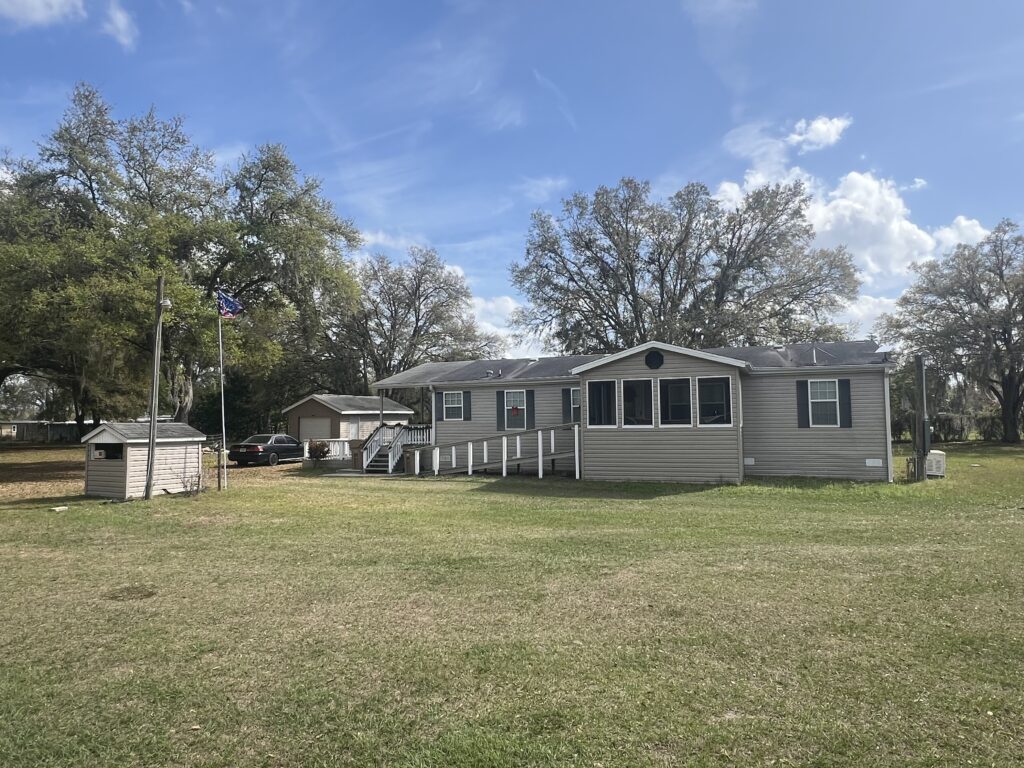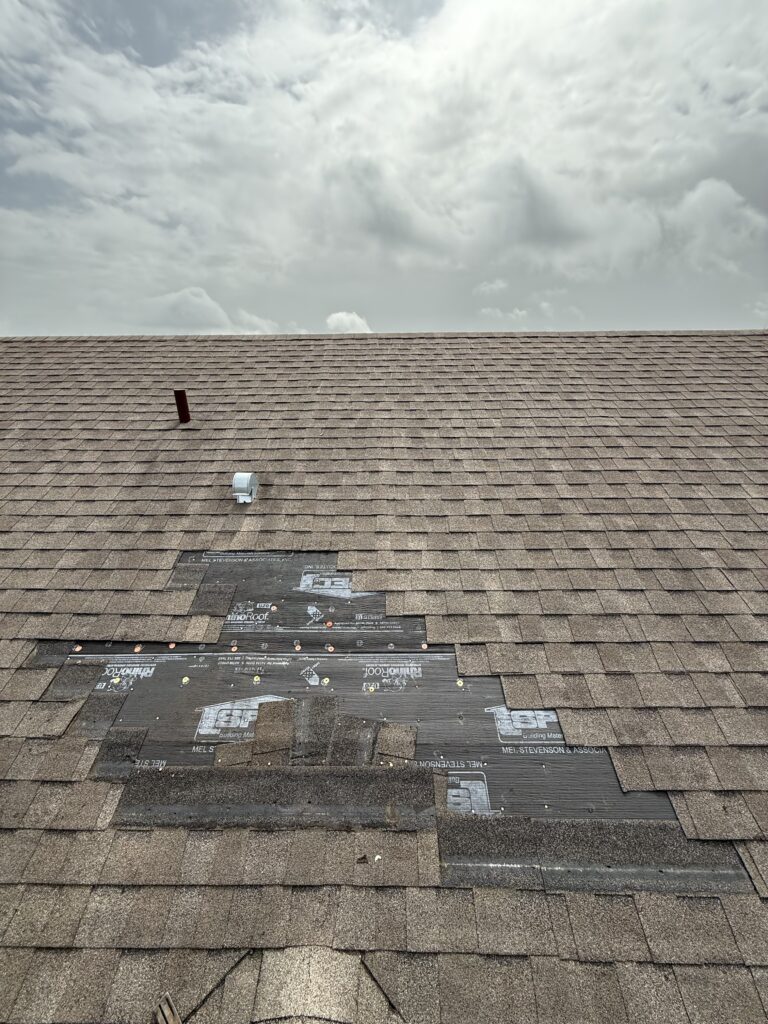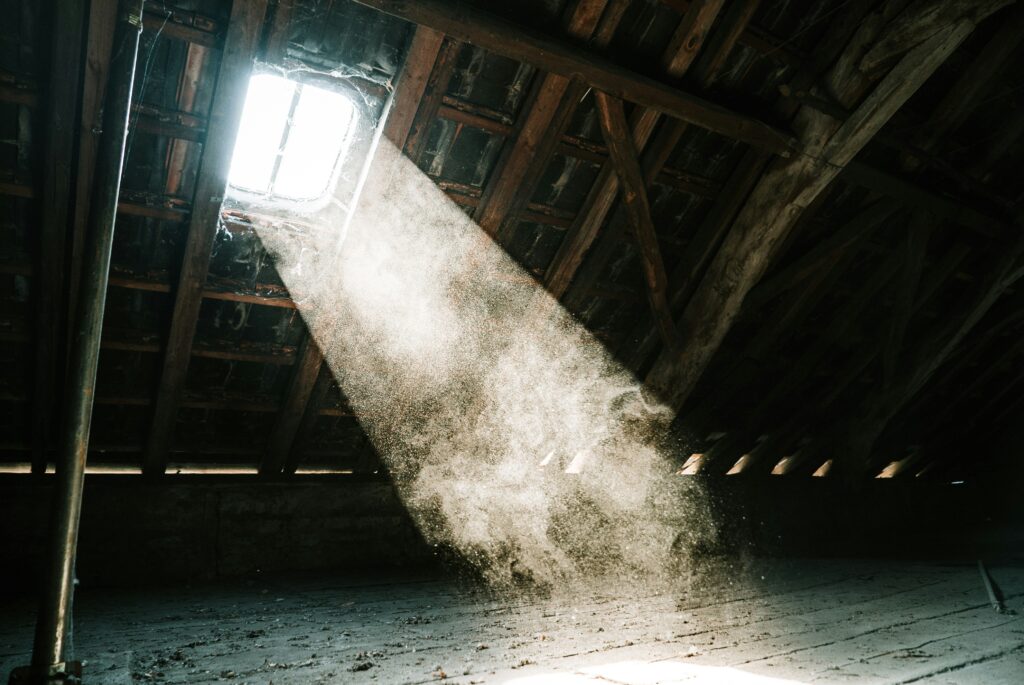Common Signs of Roof Damage After High Winds
There is a familiar and unsettling feeling that comes after a severe Florida storm has passed. Once the howling wind and lashing rain finally subside, a sense of relief is quickly followed by a nagging worry: is my roof okay? High winds, even from a strong thunderstorm that is not a full-blown hurricane, can exert an incredible amount of force on your home’s roof, causing significant and often hidden damage that can compromise its ability to protect your home.
The moments after a storm are a critical time. Identifying any potential damage as quickly as possible is the key to preventing a minor issue, like a few lifted shingles, from turning into a major and expensive interior leak the next time it rains. By knowing what to look for and performing a safe and thorough inspection of your property from the ground, you can spot the common signs of wind damage and take the proactive steps needed to secure your home.
Your First Step: The Ground-Level Inspection
Before you do anything else, it is essential to prioritize your safety. You should never, under any circumstances, get on your roof to inspect it, especially after a storm when it could be slippery, covered in debris, or even structurally compromised. A complete and effective initial inspection can be conducted from the safety of the ground.

Take a slow walk around the entire perimeter of your house, looking up at all the different slopes and angles of your roof from various vantage points. A pair of binoculars can be an invaluable tool during this process. Look for the most obvious and glaring signs of damage first. Are there any shingles that are completely missing, leaving behind a patch of a different color? Do you see any large tree limbs or other debris that has landed on the roof surface?
Just as important as looking at the roof is looking at the ground around your home. Carefully scan your lawn, your flowerbeds, and your driveway for any shingles, pieces of metal, or roofing nails that may have been blown off during the storm. Finding a shingle in your yard is a definitive sign that your roof has sustained damage, even if you cannot immediately spot the exact location where it came from.
Suspect your roof has sustained wind damage? Click here to learn more about storm damage repairs.
The Obvious Damage: Missing and Damaged Shingles
The most common and easily identifiable form of wind damage is to the shingles themselves. The force of the wind can get underneath the edge of a shingle and, over the course of a storm, lift it, bend it, or tear it completely from the roof.
Completely missing shingles are the most urgent problem, as this exposes the underlying water-resistant membrane, or underlayment, to direct sunlight and rain. While the underlayment offers a temporary layer of protection, it is not designed to be a permanent roofing surface and can quickly degrade, leading to a leak.
A more subtle but equally serious form of damage occurs when a shingle is lifted by the wind with enough force to break its factory-applied sealant strip, but not enough to tear it completely off. The shingle may lay back down and appear flat, but its primary seal has been broken. This leaves it extremely vulnerable to being ripped off in a future storm and creates a pathway for wind-driven rain to be forced up and under the shingle, which can cause a hidden leak.

You should also look for shingles that have a visible horizontal crease. This happens when the wind violently bends a shingle back on itself, fracturing the fiberglass matting inside. This crease is a significant weak point that will eventually crack and lead to a leak.
A Closer Look: Damage to Soffits, Fascia, and Gutters
The edges and overhangs of your roof are particularly vulnerable to the lifting forces of high winds. The components in this area, the soffit, fascia, and gutters, are often the first to show signs of damage.
The fascia is the long, straight board that runs along the lower edge of your roof, and the soffit is the finished surface on the underside of the roof’s overhang. High winds can get behind these components and peel back or completely tear off sections of the aluminum or vinyl that covers them. This is not just a cosmetic issue. Damaged soffit and fascia can expose the underlying wooden roof structure to rain and moisture, which can lead to rot over time. It also creates an inviting entry point for pests like squirrels and insects.
Your gutter system is also highly susceptible to wind damage. Look for sections of your gutters that have been bent, dented, or are pulling away from the house. A fallen tree limb can easily crush a section of a gutter. A damaged gutter system cannot do its job of effectively channeling rainwater away from your home. This can cause water to overflow and back up against the edge of your roof, where it can seep in and damage the fascia and roof decking.
The Hidden Danger: Damage to Flashing and Seals
Some of the most critical and leak-prone areas of your roof are the places where there is a transition or a penetration. These areas are made watertight by pieces of metal called flashing. This flashing is sealed with a specialized roofing sealant, and damage to these seals is a very common source of post-storm leaks.
Flashing is the metal used to protect the seams in your roof, such as in the valleys where two roof slopes meet, or around any object that penetrates the roof deck. This includes your chimney, plumbing vents, and skylights. The high pressures of wind and rain during a storm can lift and bend these metal pieces, breaking the watertight seal. A broken seal around a chimney is one of the most common and difficult-to-spot sources of a major roof leak.
You should also look at the vents on the peak, or ridge, of your roof. These ridge vents are essential for attic ventilation, but they can be damaged or lifted by high winds, creating another direct entry point for rain to get into your attic and home.
Don’t Forget the Interior: Checking Your Attic for Leaks
After you have completed your inspection of the home’s exterior, the final part of your assessment should take place inside your home, specifically in the attic. An interior check is the only way to confirm if a suspected area of damage on the outside has actually turned into an active leak.

If it is safe to do so, go into your attic with a powerful flashlight. Carefully look at the underside of the roof decking, which is the plywood or OSB sheathing that your shingles are attached to. You are looking for any signs that water has made its way through.
The most obvious signs are areas of wood that are actively damp to the touch or are darkly discolored from water stains. Pay close attention to the areas around any plumbing vents, exhaust fans, or chimneys. You should also check the insulation on the floor of the attic. If you see areas where the insulation is wet, matted down, or compressed, it is a clear sign of a leak. On a bright, sunny day after a storm, you may even be able to see small pinholes of daylight coming through the roof, which is a definitive indicator of a hole that needs to be repaired. Finally, be on the lookout for any new water stains on the ceilings of your home’s living spaces, which means a leak has already made its way completely through your attic.
Have a leak? Click here to learn more about roof repairs.
What to Do Next: Calling a Professional
If your inspection reveals any of the signs of wind damage, from a single missing shingle to a new water stain on your ceiling, it is time to call a professional.
Before you call, be sure to take clear and detailed photos of all the damage you have found. This documentation will be extremely important for your homeowners’ insurance claim.
It is absolutely essential that you call a reputable, licensed, and insured local roofing company that has a permanent presence in the Clermont community. Be extremely wary of the out-of-town “storm chasers” that often flood an area after a storm, knocking on doors and using high-pressure sales tactics. A local company like Clermont Roofing Inc. has a vested interest in maintaining its reputation and will be here for you long after the job is done. A professional roofer will be able to safely get on your roof and perform a much more thorough inspection, identifying all of the subtle, hidden damage you may have missed. They will then provide you with a detailed estimate and help you navigate the often-confusing insurance claim process.
The period after a severe storm can be a stressful time for any homeowner. By performing a safe and systematic inspection of your property, you can quickly identify any damage and take the necessary steps to protect your home from further harm. Recognizing the signs of wind damage, from missing shingles and damaged gutters to bent flashing and interior leaks, is a crucial skill for any Florida homeowner.
If your post-storm inspection reveals any signs of trouble, do not delay in seeking professional help. We encourage you to contact the trusted, local experts at Clermont Roofing Inc. for a fast, professional, and honest assessment of your roof’s condition. We are here to be your partner in storm recovery and to ensure your Clermont home is safe and secure.
